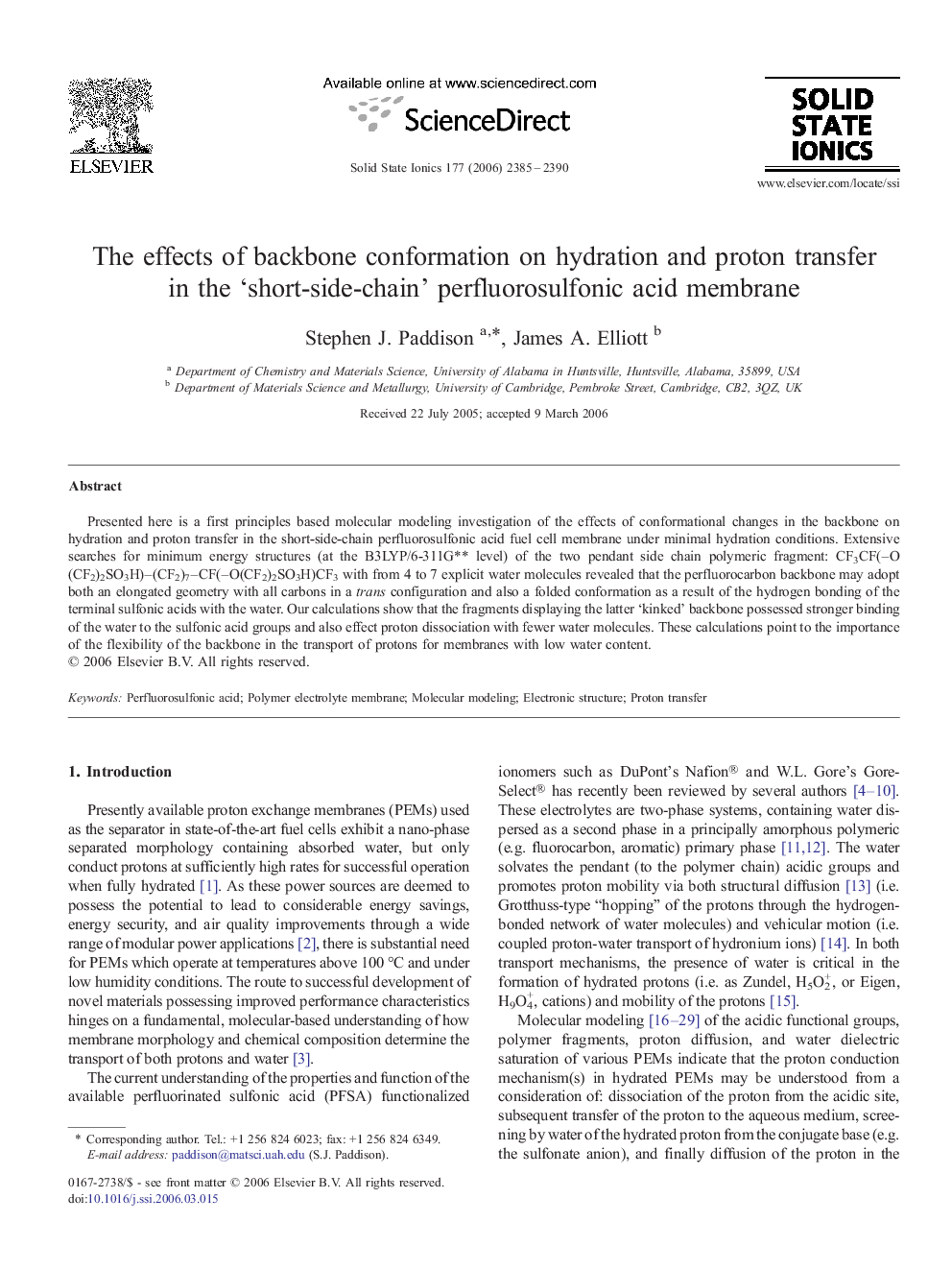| Article ID | Journal | Published Year | Pages | File Type |
|---|---|---|---|---|
| 1295495 | Solid State Ionics | 2006 | 6 Pages |
Presented here is a first principles based molecular modeling investigation of the effects of conformational changes in the backbone on hydration and proton transfer in the short-side-chain perfluorosulfonic acid fuel cell membrane under minimal hydration conditions. Extensive searches for minimum energy structures (at the B3LYP/6-311G⁎⁎ level) of the two pendant side chain polymeric fragment: CF3CF(–O(CF2)2SO3H)–(CF2)7–CF(–O(CF2)2SO3H)CF3 with from 4 to 7 explicit water molecules revealed that the perfluorocarbon backbone may adopt both an elongated geometry with all carbons in a trans configuration and also a folded conformation as a result of the hydrogen bonding of the terminal sulfonic acids with the water. Our calculations show that the fragments displaying the latter ‘kinked’ backbone possessed stronger binding of the water to the sulfonic acid groups and also effect proton dissociation with fewer water molecules. These calculations point to the importance of the flexibility of the backbone in the transport of protons for membranes with low water content.
